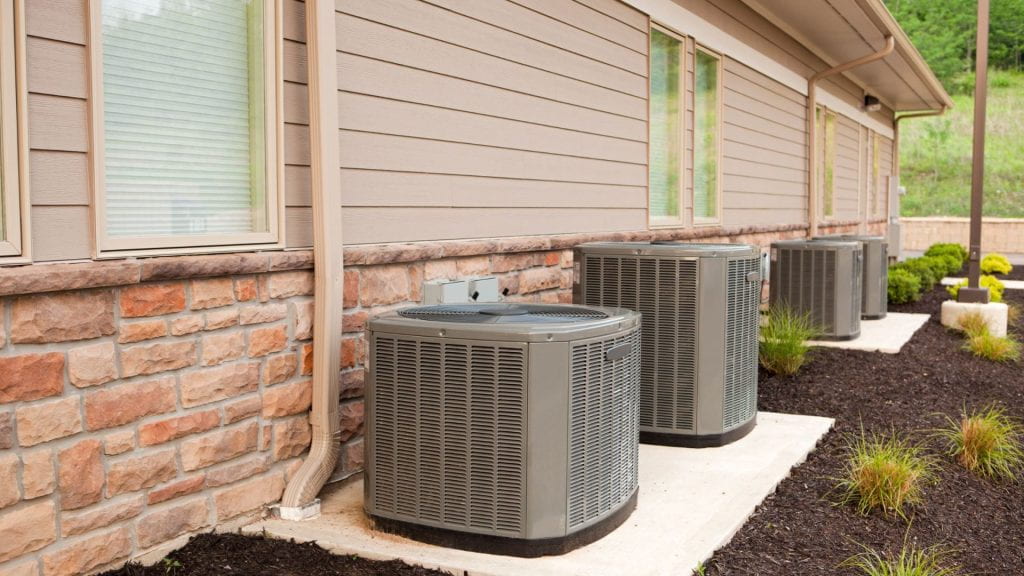When it comes to enhancing the area around your outdoor air conditioning unit, like the Rheem 3 Ton AC, the choice of plants can be as functional as it is aesthetic. While the primary goal is to ensure the AC unit operates efficiently without any obstruction to airflow, planting the right types of plants can also help improve air quality and add to the beauty of your outdoor space. Here’s a guide to selecting the best plants for shielding your AC unit and boosting the surrounding air quality.
Best Plants for Shielding Your Rheem 3 Ton AC Unit
Understanding the Basics
Before diving into plant selection, it’s crucial to understand a few key principles regarding AC units:
Airflow: The AC unit needs adequate space for air intake and exhaust to operate efficiently. Plants should be placed at least 2-3 feet away from the unit to ensure unobstructed airflow.
Accessibility: Ensure that the plants do not hinder access to the AC unit for maintenance and repair.
Debris: Choose plants that are less likely to drop leaves or debris that could clog the AC unit.
Best Plants for Surrounding an AC Unit
1. Ornamental Grasses
Ornamental grasses like Blue Fescue or Maiden Grass are excellent choices for surrounding your AC unit. These grasses don’t grow too tall or dense, ensuring airflow isn’t blocked. They also add a modern touch to the landscape and are low maintenance.
2. Shrubs
Compact shrubs such as Boxwood or Dwarf Yaupon Holly can be ideal for creating a natural screen around your AC unit. These shrubs are easy to trim and maintain at a suitable height and density to prevent airflow blockage. They also have a neat appearance that enhances the aesthetic of the area.
3. Tall Perennials
Tall perennials like Russian Sage or Daylilies can provide visual interest and coverage without overcrowding the AC unit. Their root systems are generally non-invasive, which is crucial for avoiding any underground parts of the air conditioning system.
4. Vines
Vines such as Clematis or Star Jasmine can be grown on a trellis to create a vertical green screen around the AC unit. This method keeps plants off the ground, reducing debris and maintaining necessary airflow. Additionally, these vines can add floral and fragrant elements to the space.
5. Ground Cover
Low-growing ground covers like Creeping Thyme or Sedum are excellent for keeping the ground area around your AC unit tidy and attractive. These plants are hardy and can withstand the heat from the AC unit, besides minimizing the amount of dust and dirt that might enter the unit.
Benefits of Planting Around Your AC Unit
Air Quality Improvement
Plants around an AC unit can contribute to improved air quality in multiple ways:
Dust and Pollutant Reduction: Plants can trap dust and other particulates, preventing them from entering your home and the AC system.
Oxygen Production: Through photosynthesis, plants release oxygen, enhancing the overall air quality of your environment.
Aesthetic Enhancement
Strategically placed plants not only camouflage an otherwise industrial-looking unit but also contribute to the overall landscape design of your property, making it more inviting and pleasant.
Energy Efficiency
Plants can provide shade and help lower the temperature around the AC unit, potentially increasing its efficiency and longevity by reducing the workload on the system during hot days.
Considerations
While selecting plants, consider their growth patterns and maintenance needs. It’s important to choose species that are suitable for your local climate and soil conditions. Additionally, regular pruning and upkeep will ensure that the plants remain healthy and do not interfere with the operation of your AC unit.
Conclusion
Choosing the right plants to surround your Rheem 3 Ton AC unit is about balancing functionality with aesthetics. With the right selection, you can ensure your unit remains efficient and is integrated beautifully into your landscape, contributing to both the functionality and the environmental quality of your home setting. Whether it’s the soft sway of ornamental grasses or the neat framework of compact shrubs, the plants you choose can transform the look of your AC unit from a necessary appliance into a complemented feature of your garden.


